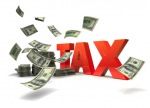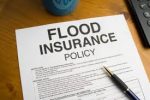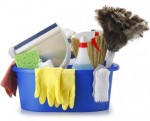Key Trends Home Buyers Should Watch in 2019


Serving South Florida


Filed under: Blog, Exclusive Buyer Agent, First Time Homebuyers, Florida Real Estate, Home Buyer Advice, Home Buyers, Home Financing, Homebuyer Advice, Mortgage Information, Real Estate, Real Estate Investment, real estate news, Real estate trends, South Florida Real Estate, Tax deductions by Kim Bregman
Comments Off on Key Trends Home Buyers Should Watch in 2019

Filed under: Blog, Down Sizing, Exclusive Buyer Agent, First Time Homebuyers, Florida Real Estate, HELOC deductions, Home Buyer Advice, Home Buyers, Home Financing, Homebuyer Advice, International Home Buyers, International investors, Mortgage Interest Deductions, Real Estate, Real Estate Investment, real estate news, Relocation, Retirement, South Florida Real Estate, Tax deductions by Kim Bregman
Comments Off on Tax Considerations When Deciding to Relocate.

After Hurricane Irma, much of Florida lost power. And during Hurricane Maria, all of Puerto Rico is in the dark.
The one-two punch of storms reminded Floridians of the importance of owning a generator. If you’re shopping for a power source, here are factors to consider:
How much do you want to spend?
Stand-by generators can power your whole house and usually run on natural gas or propane. They typically cost $5,000 to $10,000, according to Consumer Reports. And you’ll need to start planning the installation months in advance. Most homeowners opt for portable generators, which usually won’t run central AC and cost $400 to $1,000. (However, Consumer Reports’ top-rated portable generator is a Honda that goes for $3,999.)
What do you want to power?
If you want to run a fridge, a fan and a few lights, a small portable generator will do the job. If you hope to keep living as if the hurricane never hit, you’ll need a stationary generator. And if you’re willing to rough it but would like to run a window AC unit, you’ll want to make sure before the storm that your generator has enough juice to run your AC. Another caveat: Cheap generators can produce power surges that will fry expensive electronics.
How much noise can you stand?
Or, put another way, how many decibels do you want to bombard your neighbors with? In general, the more expensive the generator, the quieter it is.
Technology is getting better.
For decades, Floridians have been buying portable generators that were the mechanical equivalent of muscle cars, says Paul Hope of Consumer Reports. Now, though, manufacturers are designing fuel-injected engines for generators. These models are quieter, more fuel-efficient and emit less carbon monoxide. They’re also more expensive.
The smart move, says Hope, is to shop for a generator between storms or after hurricane season. That gives you time to research what you need — and to hire an electrician to install a transfer switch or interlock device that lets the generator power your house.
Filed under: Exclusive Buyer Agent, First Time Homebuyers, Florida Real Estate, Home Buyer Advice, Home Buyers, Home Maintenance, Homebuyer Advice, Insurance Claims, Real Estate, Real Estate Closings, Real Estate Investment, real estate news, Real estate trends, Relocation, South Florida Real Estate by Kim Bregman
Comments Off on Buying a generator: Tips to know before you make a purchase

When reclining on South Florida’s sandy beaches there’s no need to feel that tug of guilt about your best friend back home. Your dog could be right here with you, frolicking in the blue-green waters of the Atlantic, or fetching a ball or Frisbee on one of South Florida’s dog-friendly beaches.
Remember to always have plenty of water on hand for your pets to avoid dehydration, which can sneak up on humans and dogs alike in Florida’s heat all year round. Seek out frequent breaks for your dogs in the shade while visiting dog-friendly beaches in Florida, and consult with your pet’s veterinarian about special sunscreen for dogs. Bring plastic bags to clean up after your pet and leave the beach like you found it and don’t forget to test the temperature of the sand. If it is too hot for you to walk on it is too hot for your best friend too.
The 80-mile stretch from Jupiter to Miami offers a number dog beaches for you and your pooch to explore. If your dog is friendly and likes to play in the sun and sand, certain beaches and parks in this South Florida region provide designated play areas just for dogs. Each location maintains rules about conduct and charges a nominal access fee; Some municipalities allow visitors to purchase beach passes online or on location. Bring your dog’s current rabies certificate with you to show as needed.
Palm Beach County Dog Beaches
Starting in the North part of the county is Jupiter’s Off Leash Beach. Dogs are welcome on a 2.5 mile stretch of beach on this coastline at A1A and Marcinski Road in northern Palm Beach County. The cost is free and so is parking along the beach. Free dog bags are provided by Friends of Jupiter Beach.
Bark Beach on Spanish River Beach, in Boca Raton is open on Friday’s, Saturday and Sundays from 7-9am and 3pm to sunset from Nov-March and from 5pm to sunset from March to Nov. The dog beach is located between the lifeguard towers 18 and 20 at 3001 N. Ocean Blvd. You will need a valid parking permit if you are a resident of Boca Raton or pay the daily parking fee.
Broward County Dog Beaches
Fort Lauderdale Canine Beach at Sunrise Boulevard at A1Ainvites dogs of all sizes and breeds to its 100-yard beach open Fridays, Saturdays and Sundays from 3 p.m. to 7 p.m. in winter and 5 p.m. to 9 p.m. in summer for an annual fee. When you visit the canine beach, your dog must be leashed. You also must bring waste bags to pick up after your dog, and you must have a permit. You can pick up a permit to let your dog play in the unfenced area from the City of Fort Lauderdale (1350 West Broward Boulevard; 954-828-7275) with proof of current vaccines including rabies.
Dog Beach of Hollywood welcomes socialized dogs to its sandy dunes, equipped with its own park ranger. The beach strongly enforces picking up after your dog to ensure that the area remains sanitary. Open Fridays, Saturdays and Sundays from 3 p.m. to 7 p.m., November through March and 4 p.m. to 8 p.m., April through October, Dog Beach of Hollywood charges a fee at a daily or annual rate. All dogs must have current vaccines. You can purchase a beach pass on site or at Hollywood Parks Recreational and Cultural Arts Office (no website; 1405 South 28th Avenue; 954-921-3404).
Miami-Dade Dog Beach
The only dog beach in the City of Miami Beach is the Miami Bark Beach, this dog beach sits adjacent to North Shore Open Space Park, which is also pet-friendly and a great place for a stroll after a swim in the ocean. There are also plenty of outdoor pet-friendly restaurants nearby. At the beach, dogs must be on a leash except in the designated area. Proof of your dog’s vaccinations is required.
Filed under: Blog, Florida Real Estate by Kim Bregman
Comments Off on Dogs Love the Beach Too!

If a flood swamps your home, will insurance cover the damage? That depends on the value of your home, the amount of water damage and whether you have a flood insurance policy.
Let’s look at some persistent myths about flood insurance.
Myth: You must live in a flood plain to get coverage.
If you live in a flood plain, your mortgage company will likely require you to buy flood insurance. But you can purchase it even if you don’t live within a flood zone. “Almost anybody can get flood insurance who wants flood insurance,” says Chris Hackett, director of personal lines for the Property Casualty Insurers Association of America. The price through the federal flood insurance program is based on standardized rates and depends on the home’s value and whether or not it’s in a flood plain.
Myth: Flood insurance covers everything.
When it comes to the physical structure of your house, federal flood insurance policies top out at $250,000. If you have a $300,000 house that’s a total loss because of a flood, the most you can recoup through the program is $250,000 to cover the structure itself. For your personal possessions, the cap is $100,000 under the federal program.
Myth: My homeowners policy covers floods.
“Unfortunately, a lot of folks may be under the impression that their standard homeowners policy might cover flood damage,” Hackett says. But the standard policy does not! The typical home insurance policy doesn’t cover earthquakes or floods. So a homeowner wanting coverage for either of those disasters will need to pick up separate, specific coverage against those types of disasters.
Myth: Water damage is water damage. When it comes to your insurance, not all water damage is the same.
If there’s a storm and your “roof comes off and water comes through, that would be covered under your homeowners policy,” Hackett says. “Versus a flood situation where the water is rising from an over flowing riverbank overflows or an unnatural amount of rain that is rising from the street.
Myth: Flood maps don’t change.
Flood plains (and flood plain maps) change and evolve. Just because you weren’t in a flood plain when you bought your home a few years ago doesn’t mean you’re not in one now.
For more information, visit FloodSmart.gov.
Filed under: Blog, Exclusive Buyer Agent, Flood Insurance, Florida Real Estate, Home Buyer Advice, Home Buyers, Homebuyer Advice, Homeowners Insurance, Insurance Claims, Real Estate, Real Estate Investment, real estate news, South Florida Real Estate by Kim Bregman
Comments Off on Flood insurance: Facts and Fiction


Do not read this list and become overwhelmed, it is an extensive list meant to cover basic home maintenance. Not all of these maintenance items will apply to all homes. This is a comprehensive guideline designed for homes in the South as well as Northern climates.
Spring cleaning is a way to demonstrate pride in ownership (or rentership). A home and its contents are investments; money spent on something you really love or really need (ideally both). When you take the time to clean thoroughly and properly, you can maintain and prolong the life of the item or finish for years. Further, it means you live in a cleaner and healthier home; less dust, dust mites, allergens, odors, and dirt.
Always start from the top and work your way down. Think about it like this: dust falls down (like rain or snow) so if you start at the top, you’ll never have to re-clean a surface (which is a time waster). It doesn’t make sense to clean the floors first and then dust the tabletops; you’ll just have to clean the floors again. Use gravity to your benefit and always work from top to bottom. It also helps you not miss anything!
General Spring Cleaning Tasks:
 These are a list of some of the things that need to be done around the house, and spring is a great time to do them. So often we don’t remember to do them, so let this be your wake-up call!
These are a list of some of the things that need to be done around the house, and spring is a great time to do them. So often we don’t remember to do them, so let this be your wake-up call!
Tests and replacements:
Test smoke alarm
Test carbon monoxide alarm
Check flashlight batteries
Check fire extinguishers
Change air filters
Check all window screens for tears and repair or replace as required
Overall Spring Cleaning Chores: 
Remove fingerprints and dirt from light switches and door handles
Spring Clean Outside:

Filed under: Blog, Exclusive Buyer Agent, First Time Homebuyers, Florida Real Estate, Home Buyer Advice, Home Buyers, Home Maintenance, Homebuyer Advice, Real Estate, Real Estate Investment, South Florida Real Estate, western north carolina real estate by Kim Bregman
Comments Off on Spring Cleaning Guide from Optima Properties

As Hurricane Matthew churns through the Atlantic with a possible landfall in Florida, the Property Casualty Insurers Association of America (PCI) urged property owners to take some basic precautions to protect themselves and their belongings.
“With the potential for Hurricane Matthew to hit somewhere along the East Coast, the Governor has issued a state of emergency for all 67 counties in Florida,” says Logan McFaddin, PCI Florida regional manager. “This caliber of a system could bring major flooding and damages along Florida’s East Coast.”
In addition to making sure residents have emergency kits and plans ready, PCI urges residents and business owners to take precautionary measures to prevent damage to vulnerable property. Flooding from storm surge during hurricanes and tropical storms can be especially dangerous for residents along the coast and further inland. PCI recommends that homeowners who sustain damage report it as early as possible to their insurance company.
McFaddin says flood insurance is advisable, but “there is typically a 30-day waiting period between the date of purchase and when flood coverage will go into effect.”
PCI hurricane precautions
Review your property insurance policy, especially the “declarations” page, and check whether your policy pays replacement costs or actual cash value for a covered loss.
Inventory household items, and photograph or videotape them for further documentation. Keep this information and insurance policies in a safe place.
Keep the name, address and claims-reporting telephone number of your insurer and agent in a safe and easily accessible place.
Protect your property by covering all windows with plywood or shutters, moving vehicles into the garage when possible, and placing grills and patio furniture indoors.
Keep all receipts for any repairs so your insurance company can reimburse you.
Check with your insurance adjuster for referrals to professional restoration, cleaning and salvage companies if additional assistance is needed.
Make sure watercraft are stored in a secure area, like a garage or covered boat dock. A typical homeowners policy will cover property damage in limited instances for small watercraft, and separate boat policies will provide broader, more extensive property and liability protection for larger, faster boat, yachts, jet skis and wave runners.
There will certainly be an extended period with power outages. After the storm, empty out your freezer and refrigerator of all perishable items and put in covered trash receptacles. Unplug all appliances and electronics since there will certainly be surges when power is restored.
Be mindful of downed power lines when going outside after the storm. Broken branches can also be dangerous and will continue to fall given the winds and rain that follow the storm. Remove debris from your property to ensure continued safety.
Filed under: Blog, Exclusive Buyer Agent, Florida Real Estate, Home Buyer Advice, Home Buyers, Home Maintenance, Homebuyer Advice, real estate news, South Florida Real Estate by Kim Bregman
Comments Off on Prepare for Hurricane Matthew’s Aftermath

Always know who the real estate agent you are working with represents. If they are the Listing Agent they represent the Seller, a Transactional Agent works for their personal benefit and even though an agent will put you in the car and drive you around and are not the listing agent, in most states they are Sub-agents for the Seller and work for the seller. It is most advisable for buyers to only work with Exclusive Buyer Agents (EBAs). If you find that you are at an open house or have called an agent and they are not an EBA…you’re your tongue. What buyers may innocently say in the presence of a Seller, Listing Agent, Transactional Agent, or Seller’s Sub-agent can be used against them during a negotiation.
While it may be tempting for buyers to say what’s on their mind during their home search, you should consider yourself in a poker game and keep your cards close to your chest and your comments to yourself. There are some things home buyers should never say on the fly.
Others may be listening. Listing agents, seller and neighbors all have motives to keep tabs on the situation — or there could be even be a camera or recording device planted somewhere. In the age of smart home security you can never be too sure.
Those off-the-cuff comments made while moving from room to room could be used against you.
Here are some obvious comments home buyers should never say when shopping for a home:
‘I love it; it’s perfect!’
That feedback goes straight to the seller.
When the less-than-full-price offer comes in and the buyer requests all sorts of concessions, how will the seller be inclined to respond?
‘That (decor, furniture, wall color) is awful!’
What were they thinking?
So maybe the sellers’ tastes are not what the buyer would pick, but that doesn’t make their choices wrong. If these comments get back to the sellers, their desire to be cooperative when offer time comes in my be less than enthusiastic.
‘This home is way overpriced’
Be careful with that statement.
While this is a common buyer thought, what happens if this house ends up being the best option? When the listing agent or seller sees the buyer’s name on an offer, they immediately tart off in a defensive position. If is is truly overpriced your Exclusive Buyer Agent should provide a comprehensive analysis during the negotiation to make this point.
‘I can afford to spend up to X’
While it’s certainly a good idea for prospective buyers to find out just how much they can afford, they should keep that information strictly between them and their Exclusive Buyer Agent. You would be surprised by the number of deals that end of at the top of your affordability range because you disclosed this to the agent that is driving you around. Insist that they develop a Comparative Market Analysis and pay no more than market value for any property regardless if you can afford to pay more. Most real estate agents have a duty to get the highest price offer for the Seller or want to get the highest price offer to get the most commission. The only type of agent that has a fiduciary responsibility to the Buyer is an Exclusive Buyer Agent, even an Accredited Buyer Agent will either be a transactional agent or sub-agent of the Seller if they are not the listing agent as well.
“Why is the Seller moving?”
This is a personal question that’s best not asked by a buyer, it will more often then not result in an evasive answer or a lie.
Let the buyer’s agent position that query with the listing agent in a diplomatic way to glean information about the situation at hand.
‘What are the neighbors like?’
Talk about putting someone on the spot. Listing agents likely have no idea — they don’t live in the neighborhood 24/7, and it would they cannot discuss race, religion, sexual orientation, etc. When cornered, is the seller likely to divulge?
“There’s a Mrs. Kravitz across the street and a curmudgeon next door? And by the way, the teenager that lives on the other side of the house? His band starts warming up in the garage about 11 p.m. on Thursday nights.”Hardly. These people are trying to sell their house. It’s all wonderful. Buyers have to assess the neighbors on their own. Visit the neighborhood and different times of the day and on the weekends to get a sense of the neighborhood.
‘Will the seller take X price?’
Negotiations are best left to agents with a written document from which to work. No Agent or Seller will be inclined to negotiate in good faith without a written offer and Proof of Funds or a pre-qualification letter that demonstrates your ability to buy the property.
Although it’s OK to be candid with your own agent and those you trust, only do so when you are not within earshot of anyone in the seller’s camp. That includes those curbside chats as you are wrapping up the showing near your car.
Be engaged but conservative in the information you share and how you react to homes you see, even if you have a real interest. You can jump for joy when you are with your agent writing the perfect offer.
Filed under: Blog, Down Sizing, Exclusive Buyer Agent, First Time Homebuyers, Florida Real Estate, Home Buyer Advice, Home Buyers, Homebuyer Advice, Kim Around the Web, Real Estate, Real Estate Closings, real estate news, Real estate trends, Relocation, South Florida Real Estate, western north carolina real estate by Kim Bregman
Comments Off on What a Home Buyer Should Never Say!

The Federal Reserve kept the benchmark rate unchanged on September 21st, in a divided vote that alludes to the possibility of a hike before the end of the year.
“The Committee judges that the case for an increase in the federal funds rate has strengthened but decided, for the time being, to wait for further evidence of continued progress toward its objectives,” the Federal Open Market Committee (FOMC) released in statement. “The Committee expects that economic conditions will evolve in a manner that will warrant only gradual increases in the federal funds rate; the federal funds rate is likely to remain, for some time, below levels that are expected to prevail in the longer run.”
“Our decision does not reflect a lack of confidence in the economy,” Fed Chair Janet Yellen said in a press conference, later adding, “We’re generally pleased with how the U.S. economy is doing.”Today’s action was largely expected by analysts as policymakers stood fast this summer, despite initially forecasting four hikes this year. The federal funds rate informs the trajectory of mortgage rates, which remain at historic lows.
Perhaps no sector has benefited more from ultra-low rates than housing, which was devastated by the real estate crash. Home sales are expected to total about 5.7 million this year, up from 5.4 million in 2014 and 4.6 million in 2011. The recovery can at least partly be traced to 30-year fixed mortgage rates that remain below 4%, down from about 6% in 2008, keeping borrowing costs low for buyers.
But today’s housing market is supported by far more than low mortgage rates — namely steady job and economic growth. What’s more, 30-year mortgages are priced off 10-year Treasury note yields, which do rise as short-term rates climb, but not as steeply.
Doug Duncan, chief economist of Fannie Mae, the giant government-sponsored funder of mortgages, expects this week’s Fed hike of a quarter of a percentage point to have virtually no immediate impact on Treasury or mortgage rates, noting markets already have priced in the move. Assuming the Fed raises its rate by a percentage point over the next year, Duncan expects 30-year mortgage rates to drift from 3.9% to 4.1% during the period. That would boost the monthly cost of a typical $225,000 mortgage by $26 to $1,454 — not enough to deter most buyers.
Adjustable-rate mortgages, many of which are modified annually, could increase about twice as rapidly, by about a half a percentage point. Yet as long as job growth and aggregate U.S. incomes increase proportionally, Duncan expects any market impact to be modest. A far bigger restraint on home sales, he says, is a limited supply that should push up prices by nearly 5% both this year and in 2016. As a result, Duncan expects home sales to increase 4% in 2016, down from 8% this year, with higher rates holding back 1% to 2% of deals.
“As long as the rate rise is gradual, I don’t see it as a hugely important factor,” he says.
Filed under: Blog, boomerrang homebuyer, Down Sizing, Exclusive Buyer Agent, First Time Homebuyers, Florida Real Estate, Home Buyer Advice, Home Buyers, Home Financing, Homebuyer Advice, House Closings, Kim Around the Web, Mortgage Information, Real Estate, Real Estate Closings, real estate news by Kim Bregman
Comments Off on Mortgage Rates and The Fed

Filed under: Blog, Exclusive Buyer Agent, First Time Homebuyers, Florida Real Estate, Home Buyer Advice, Home Buyers, Homebuyer Advice, Kim Around the Web, Real Estate, real estate news, Real estate trends, Relocation, South Florida Real Estate, western north carolina real estate by Kim Bregman
Comments Off on Location, Location, Location!
 Kim N. Bregman
Kim N. BregmanAll information is provided by the licensed REALTOR®/Broker/Agent. This information is not verified for authenticity or accuracy and is not guaranteed. This website is not responsible or liable in any manner for any content posted herein or in connection with our services. Information is not guaranteed and must be confirmed by the end user.
Copyright © 2024 OPTIMA PROPERTIES. All Rights Reserved. Privacy Policy | Intellectual Property Rights | Sitemap | Real Estate Website Design & Internet Marketing by Agent Image